In this blog post, we embark on a journey through the intricacies of Constant Contact’s updates and future developments. As you delve into the world of email marketing excellence, we’ll explore how Constant Contact not only addresses your current needs but also sets the stage for the future. From the latest features to proactive user engagement, join us in uncovering the innovative landscape that Constant Contact is sculpting for its users. Let’s navigate the updates, anticipate future developments, and discover the tools that will elevate your affiliate marketing endeavors to new heights. Welcome to the revelation of excellence – welcome to Constant Contact’s details.
Table of Contents
What is Constant Contact?
In the dynamic realm of digital marketing, Constant Contact stands as a stalwart email marketing platform, empowering businesses to forge meaningful connections with their audience. This comprehensive tool goes beyond conventional email marketing, offering a suite of features designed to streamline campaigns and enhance engagement.
The company was founded as Roving Software in 1995, taking its present name in 2004. Constant Contact has earned its reputation as a user-friendly and robust platform. Its primary focus is on simplifying the email marketing process for businesses of all sizes.

Setting Up Your Constant Contact Account
Setting up your Constant Contact account is the first crucial step towards unlocking the full potential of this powerful email marketing tool. In this guide, we’ll walk you through the process, ensuring you can hit the ground running with your email campaigns.
Step-by-Step Guide:
1. Visit Constant Contact Website:
Begin by visiting the Constant Contact website at www.constantcontact.com. Look for the “Sign-Up” or “Get Started” button prominently displayed on the homepage.
2. Create Your Account:
Click on the sign-up button, and you’ll be prompted to create your account. Fill in the necessary information, including your email address, business name, and a secure password.
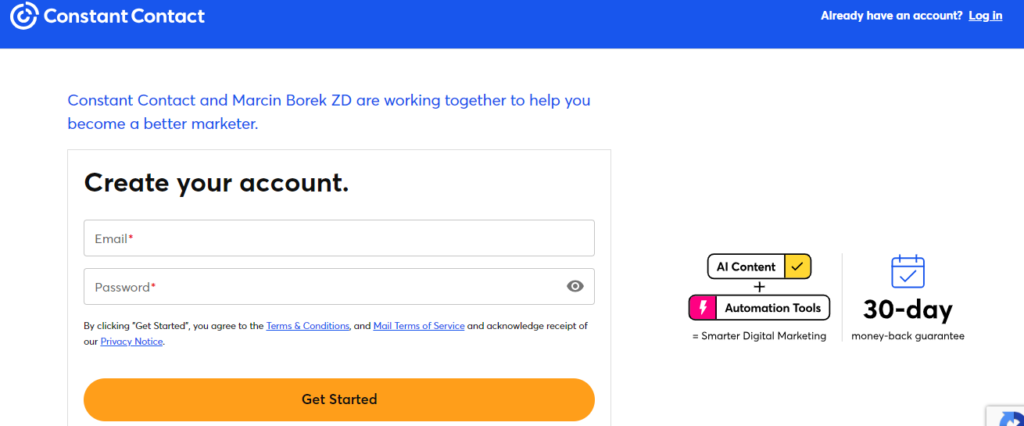
3. Choose Your Plan:
Constant Contact offers different pricing plans to cater to various business needs. Select the plan that aligns with your goals and budget. You can start with a free trial before committing to a paid plan.
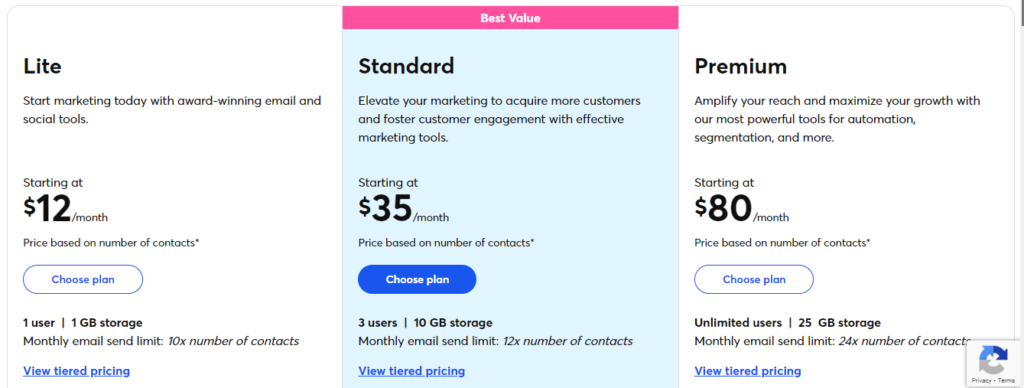
4. Customize Your Account:
Once your account is set up, take a moment to customize your profile. Add your business logo, social media links, and a brief description to personalize your email communications.
5. Import Your Contacts:
To make the most of Constant Contact, import your existing contacts. The platform supports various file formats, making it easy to migrate your contact list seamlessly.
6. Explore the Dashboard:
Get familiar with the dashboard. Here, you’ll find tools to create campaigns, manage contacts, and access analytics. Constant Contact’s user-friendly interface ensures a smooth navigation experience.
Tips for Success:
- Complete your profile: A complete profile adds professionalism to your emails.
- Explore features: Take advantage of the various features, such as templates and automation, to enhance your campaigns.
- Attend webinars: Constant Contact often hosts webinars to help users maximize their experience. Attend these sessions to gain insights and tips.
By following these steps and tips, you’ll have your Constant Contact account up and running in no time, ready to launch impactful email campaigns.
Email Campaign Creation
Crafting compelling email campaigns is at the heart of successful digital marketing, and Constant Contact simplifies this process with its user-friendly tools. In this guide, we’ll explore how to create impactful email campaigns using Constant Contact.
Getting Started:
1. Login to Your Constant Contact Account:
Visit www.constantcontact.com and log in to your account. Once logged in, navigate to the dashboard.

2. Choose “Create” and “Email”:
On the dashboard, look for the “Create” button. Select “Email” from the dropdown menu. This will initiate the email creation process.
Designing Your Email:
3. Select a Template:
Constant Contact provides a variety of customizable templates. Choose a template that suits your campaign goals, whether it’s a newsletter, promotion, or announcement.

4. Personalize Your Content:
Use the intuitive drag-and-drop editor to personalize your email content. Add your text, images, and branding elements. Constant Contact’s editor ensures a seamless design experience.
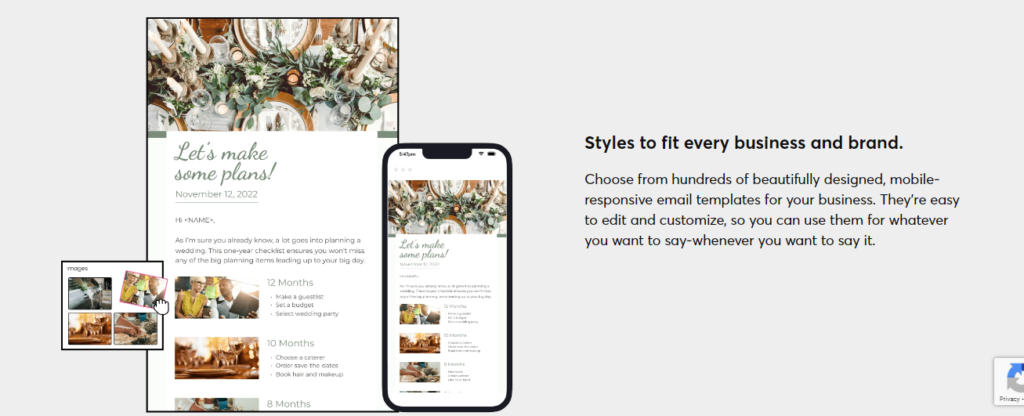
5. Add Compelling Imagery:
Enhance the visual appeal of your email by incorporating eye-catching images. Ensure they are relevant to your message and align with your brand.
Customization and Optimization:
6. Preview and Test:
Before sending your email, utilize Constant Contact’s preview and testing features. Ensure your email looks great on different devices and platforms.
7. Personalization and Segmentation:
Increase engagement by personalizing your emails and segmenting your audience. Constant Contact allows you to tailor content based on specific criteria.
Scheduling and Sending:
8. Choose Send Time:
Select the optimal time to send your email. Constant Contact provides insights and recommendations to help you maximize your campaign’s impact.
9. Review and Send:
Review your email campaign, checking for any errors or areas of improvement. Once satisfied, hit the “Send” button to launch your campaign.
By following these steps, you’ll be well on your way to creating visually appealing and effective email campaigns using Constant Contact.
Contact Management
Efficient contact management is a cornerstone of successful email marketing, and Constant Contact provides robust tools to streamline this process. In this guide, we’ll delve into how to effectively manage your contacts using Constant Contact.
Navigating Contacts:
1. Access the Contacts Tab:
Upon logging in to your Constant Contact account, navigate to the “Contacts” tab on the dashboard. Here, you’ll find a centralized hub for managing your contacts.
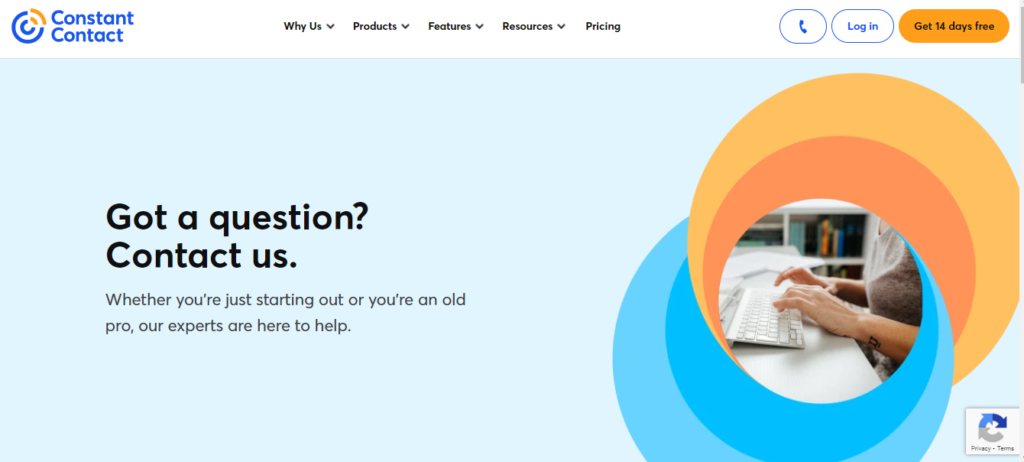
2. Importing Contacts:
Constant Contact simplifies the process of importing contacts. Click on the “Add Contacts” button to upload lists, ensuring a seamless transition of your existing contacts into the platform.
Organizing Contacts:
3. Creating Contact Lists:
Organize your contacts by creating lists based on criteria such as location, interests, or engagement level. This segmentation allows for targeted and personalized email campaigns.
4. Utilizing Tags:
Enhance organization further by utilizing tags. Apply relevant tags to contacts based on specific actions or attributes, making it easy to categorize and target subsets of your audience.
Interacting with Contacts:
5. Sending Targeted Campaigns:
Maximize engagement by leveraging your organized contacts. Constant Contact enables you to send targeted campaigns to specific lists, ensuring your messages resonate with the right audience.
6. Monitoring Engagement:
Constant Contact provides insights into contact engagement. Monitor open rates, click-through rates, and other metrics to understand how your audience interacts with your emails.
Maintenance and Growth:
7. Regularly Clean and Update:
Maintain a healthy contact list by regularly cleaning and updating it. Remove inactive contacts and update information to ensure the accuracy of your campaigns.
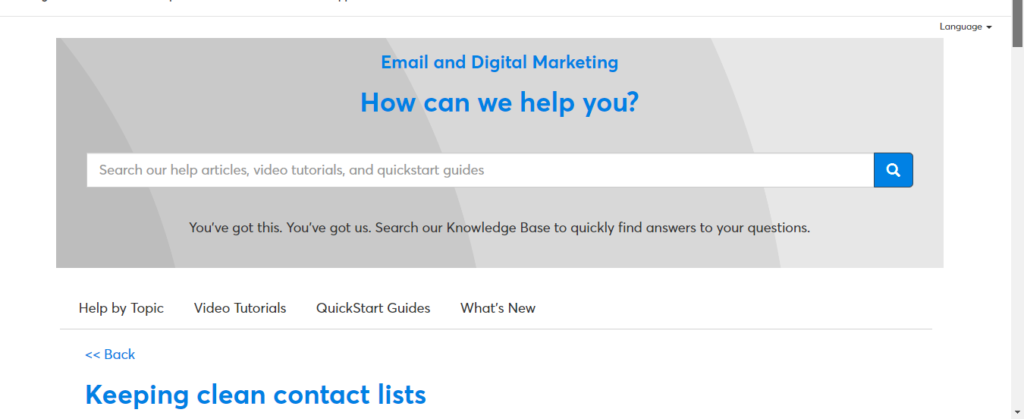
8. Grow Your List:
Constant Contact offers tools to encourage contact growth. Use customizable sign-up forms on your website and social media to expand your reach and continuously build your contact list.
By effectively managing your contacts in Constant Contact, you’ll not only streamline your email marketing efforts but also create a more personalized and impactful experience for your audience.
Automation with Constant Contact
Automation is the secret sauce that can elevate your email marketing strategy, and Constant Contact empowers users with robust automation features. In this guide, we’ll explore how to leverage automation to streamline your campaigns and engage your audience effectively.
Understanding Automation:
1. Access the Automation Tab:
Start by logging into your Constant Contact account and navigating to the “Automation” tab on the dashboard. This is where you’ll find a suite of tools to automate various aspects of your email campaigns.
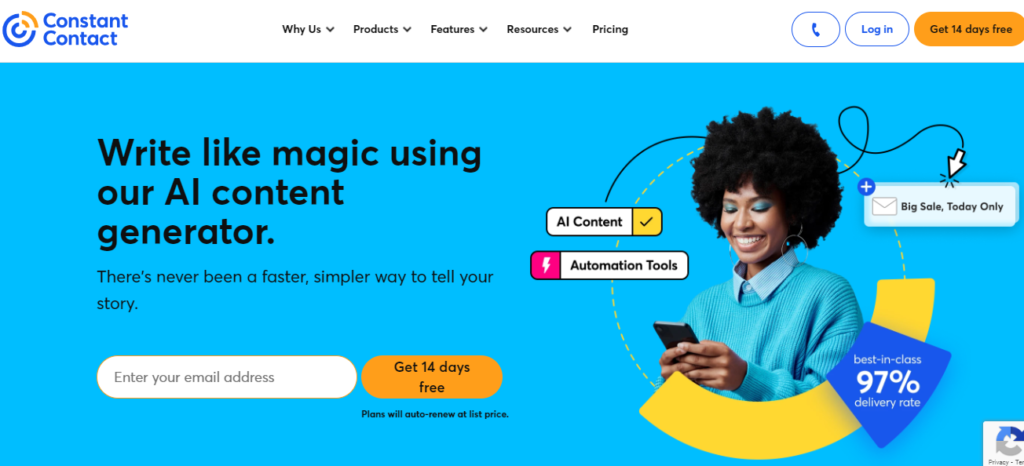
2. Explore Pre-built Workflows:
Constant Contact offers pre-built automation workflows to simplify the process. Explore options such as welcome emails, birthday greetings, or follow-up sequences to get started quickly.

Creating Your Automation:
3. Start a New Automation:
Click on the “Create Automation” button to initiate a new workflow. Choose the type of automation that aligns with your campaign goals, whether it’s nurturing leads, re-engaging customers, or delivering targeted content.

4. Define Trigger Points:
Set trigger points to initiate your automation. Whether it’s a contact joining a specific list, opening an email, or clicking a link, define the actions that will activate your automated workflow.
Customizing Your Workflow:
5. Build Workflow Steps:
Construct your automation workflow by adding steps. These can include sending emails, updating contact details, or even integrating with other tools. Constant Contact’s drag-and-drop editor makes customization intuitive.
6. Personalize Email Content:
Within your automation workflow, personalize email content based on contact actions or characteristics. Tailoring your messages enhances engagement and strengthens your connection with your audience.
Testing and Launching:
7. Preview and Test:
Before launching your automation, take advantage of Constant Contact’s preview and testing features. Ensure that each step of your workflow functions as intended.
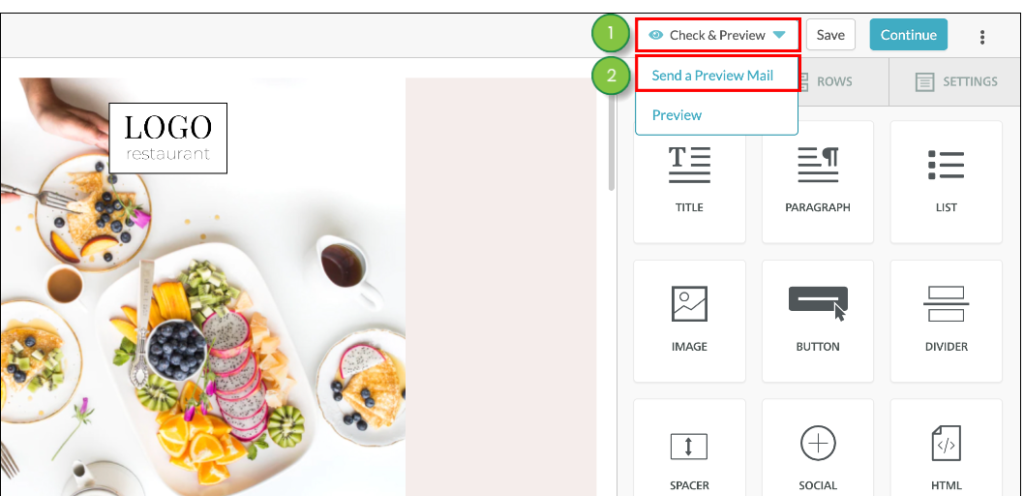
8. Launch Your Automation:
Once satisfied, launch your automation. Constant Contact will handle the rest, delivering timely and personalized messages to your contacts based on the defined workflow.
By incorporating automation into your email marketing strategy with Constant Contact, you can save time, nurture leads, and deliver a more tailored experience to your audience.
Integrations and Compatibility
Constant Contact stands out not only for its standalone features but also for its seamless integrations with other tools, making it a versatile solution for businesses. In this guide, we’ll explore the integrations and compatibility that enhance the functionality of Constant Contact.
Exploring Integrations:
1. Access the Integrations Section:
Log in to your Constant Contact account and navigate to the “Integrations” section. Here, you’ll discover a range of third-party applications and platforms that can be seamlessly integrated with Constant Contact.

2. Browse Available Integrations:
Constant Contact offers integrations with various categories of tools, including CRM systems, e-commerce platforms, and social media. Browse through the available options to find integrations that align with your business needs.
Popular Integrations:
3. CRM Integrations:
Streamline your customer relationship management by integrating Constant Contact with popular CRM systems like Salesforce or HubSpot. This ensures seamless data flow between platforms.

4. E-commerce Platforms:
For businesses with an online presence, Constant Contact integrates smoothly with e-commerce platforms like Shopify or WooCommerce. Sync customer data and create targeted campaigns based on purchase behavior.

Custom Integrations:
5. API Integration Possibilities:
For businesses with specific needs, Constant Contact provides API access, allowing for custom integrations with proprietary or niche software. This opens up endless possibilities for tailored solutions.

Compatibility with Social Media:
6. Social Media Integration:
Extend your reach by integrating Constant Contact with your social media accounts. Share your email campaigns on platforms like Facebook or Twitter directly from the Constant Contact dashboard.
Benefits of Integrations:
7. Efficiency and Data Accuracy:
Integrations enhance efficiency by automating data transfer between platforms, reducing manual effort and minimizing the risk of errors.
8. Holistic Marketing Strategy:
By integrating Constant Contact with various tools, businesses can create a holistic marketing strategy, ensuring a seamless flow of information across different channels.
In conclusion, Constant Contact’s integrations and compatibility options empower businesses to create a connected ecosystem, maximizing the impact of their email marketing efforts.
Constant Contact Pricing Plans
Understanding the pricing structure of Constant Contact is essential for businesses looking to leverage its powerful email marketing tools. In this guide, we’ll break down the pricing plans offered by Constant Contact to help you choose the one that best suits your needs.
Pricing Tiers:
1. Free Trial:
Constant Contact provides 14 days risk-free trial period for users to explore its features. This allows you to test the platform and determine if it aligns with your business requirements before committing to a paid plan.

Custom Pricing:
2. Pricing Based on Subscribers:
Constant Contact’s pricing is based on the number of subscribers in your contact list. As your business grows, you can seamlessly upgrade your plan to accommodate a larger audience without disrupting your marketing efforts.
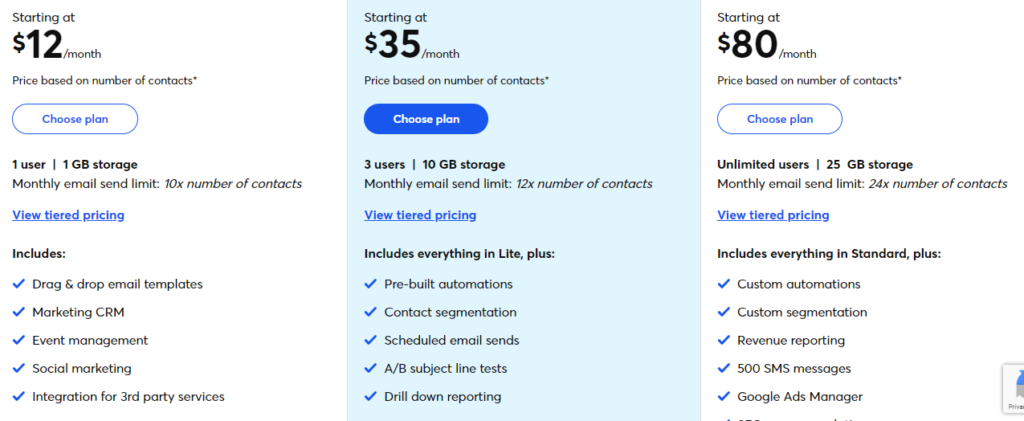
Benefits of Each Plan:
3. Affordability and Scalability:
The tiered pricing structure of Constant Contact ensures affordability for businesses of all sizes. Start with a plan that meets your current needs and scale up as your subscriber list expands.
4. Access to Premium Features:
The Email Plus Plans unlock premium features that can significantly enhance your email marketing strategy. Features like automation and advanced analytics provide more tools for customization and optimization.
Transparent Billing:
5. No Hidden Fees:
Constant Contact is transparent about its pricing, and there are no hidden fees. This straightforward approach allows businesses to budget effectively without worrying about unexpected costs.
Choosing the Right Plan:
6. Evaluate Your Needs:
When selecting a Constant Contact plan, assess your business needs and goals. Consider factors such as the size of your contact list, the complexity of your campaigns, and the desired level of automation.
In conclusion, Constant Contact’s pricing plans cater to businesses at various stages, offering flexibility, scalability, and a range of features to enhance your email marketing endeavors.
Customer Testimonials and Reviews
The experiences of other users can provide valuable insights into the effectiveness of Constant Contact as an email marketing platform. In this guide, we’ll explore the importance of customer testimonials and reviews, shedding light on how businesses have benefited from using Constant Contact.
Importance of Customer Testimonials:
1. Building Trust:
Customer testimonials play a pivotal role in building trust. When potential users see positive feedback from businesses similar to theirs, it instills confidence in the reliability and effectiveness of Constant Contact.

2. Real-world Use Cases:
Testimonials provide real-world use cases, showcasing how businesses have successfully utilized Constant Contact to achieve their marketing goals. These stories serve as inspiration for others looking to enhance their email marketing strategies.
Gathering and Showcasing Testimonials:
3. Encouraging User Feedback:
Constant Contact actively encourages users to share their experiences and feedback. Users can submit testimonials through the platform’s website or other designated channels.
4. Diverse Testimonials:
Constant Contact collects testimonials from businesses of different sizes and industries. This diversity ensures that potential users can find testimonials relevant to their specific needs.
Showcasing Reviews:
5. Online Review Platforms:
Apart from the official Constant Contact website, reviews and testimonials can be found on popular online review platforms. Businesses can explore third-party reviews to gain a comprehensive understanding of user experiences.
6. Star Ratings:
Constant Contact’s reviews often include star ratings, providing a quick visual summary of user satisfaction. Higher star ratings contribute to the platform’s positive reputation.
Leveraging Positive Experiences:
7. Sharing Success Stories:
Constant Contact highlights success stories through case studies, showcasing how businesses have overcome challenges and achieved significant results with the platform.
8. Integration in Marketing Materials:
Customer testimonials are seamlessly integrated into Constant Contact’s marketing materials, including their website, promotional emails, and other collateral. This integration reinforces the platform’s credibility.
In conclusion, customer testimonials and reviews serve as powerful tools for businesses considering Constant Contact for their email marketing needs. The authentic experiences of other users contribute to a comprehensive and informed decision-making process.
Constant Contact Tips and Tricks
Maximizing your effectiveness with Constant Contact goes beyond basic usage. Here, we’ll share valuable tips and tricks to help you make the most out of this powerful email marketing platform.
Crafting Engaging Emails:
1. Utilize Pre-built Templates:
Save time and maintain a professional look by leveraging Constant Contact’s pre-built email templates. Choose a template that suits your campaign, and customize it with your branding elements.
2. Personalize Email Content:
Increase engagement by personalizing your emails. Address recipients by their name and tailor content based on their preferences or past interactions. Constant Contact allows for easy personalization.
Optimizing Contact Management:
3. Regularly Clean Your Contact List:
Maintain a healthy contact list by regularly cleaning and updating it. Remove inactive contacts to improve deliverability and ensure your messages reach an engaged audience.
4. Segment Your Audience:
Take advantage of audience segmentation to deliver targeted content. Whether based on location, interests, or engagement level, segmentation allows for more personalized and effective campaigns.
Leveraging Automation:
5. Set Up Drip Campaigns:
Automate your communication with drip campaigns. Set up a series of emails that are triggered based on user actions, ensuring timely and relevant messages to your audience.
6. Use Behavioral Triggers:
Enhance automation by leveraging behavioral triggers. Send targeted emails based on user interactions, such as email opens or clicks, to nurture leads effectively.
Monitoring Analytics:
7. Regularly Review Analytics:
Gain insights into your campaign performance by regularly reviewing analytics. Monitor open rates, click-through rates, and other metrics to refine your strategies for better results.
8. A/B Test Your Campaigns:
Optimize your campaigns by conducting A/B tests. Test different subject lines, content variations, or send times to identify what resonates best with your audience.
Continuous Learning:
9. Attend Webinars and Training:
Constant Contact regularly offers webinars and training sessions. Attend these sessions to stay updated on new features, best practices, and advanced tips to enhance your skills.
10. Explore Constant Contact Community:
Join the Constant Contact Community to connect with other users, share insights, and seek advice. The community is a valuable resource for learning from the experiences of fellow marketers.
By implementing these tips and tricks, you can unlock the full potential of Constant Contact, creating more engaging campaigns and fostering stronger connections with your audience.
Constant Contact vs. Competitors
When choosing an email marketing platform, it’s crucial to compare options to find the best fit for your business. Let’s delve into how Constant Contact stacks up against its competitors, highlighting key features and considerations.
Key Differentiators:
1. User-Friendly Interface:
Constant Contact stands out with its intuitive and user-friendly interface. The platform is designed to be accessible for users of all levels, making it easy to navigate and create compelling campaigns.
2. Extensive Template Library:
Constant Contact boasts an extensive library of pre-built templates, allowing users to create visually appealing emails effortlessly. This wealth of options contributes to a streamlined design process.
Feature Comparison:
3. Automation Capabilities:
Constant Contact excels in automation, offering features like drip campaigns and behavioral triggers. This ensures that users can set up advanced automated workflows to nurture leads effectively.
4. Integration Options:
While Constant Contact provides seamless integrations with various platforms, competitors may have different integration capabilities. Consider the integrations offered by each platform based on your business needs.
Pricing Structure:
5. Transparent Pricing:
Constant Contact’s pricing structure is transparent, with clear plans based on the number of subscribers. Some competitors may have more complex pricing models, making it essential to compare costs accurately.
6. Value for Small Businesses:
Constant Contact is known for providing value for small businesses. Evaluate pricing, features, and scalability to determine which platform aligns best with your business size and budget.
Support and Resources:
7. Customer Support:
Compare the customer support offerings of Constant Contact with competitors. Look for responsive customer service, comprehensive documentation, and community support to ensure you have the assistance you need.
8. Educational Resources:
Constant Contact provides educational resources such as webinars and guides. Evaluate the availability and quality of educational materials to support your learning and optimization efforts.
User Feedback:
9. Customer Testimonials:
Explore customer testimonials for both Constant Contact and its competitors. Hearing about real-world experiences can provide valuable insights into the strengths and potential drawbacks of each platform.
10. Online Reviews:
Check online reviews on reputable platforms to gather feedback from a wider user base. Compare the sentiments and experiences shared by users of Constant Contact and its competitors.
In the constant evolution of the email marketing landscape, weighing the pros and cons of Constant Contact against its competitors is crucial. Consider your unique business needs, priorities, and preferences to make an informed decision.
Troubleshooting and Customer Support
Effective troubleshooting and reliable customer support are essential components of a seamless experience with any email marketing platform. In this guide, we’ll explore how Constant Contact addresses troubleshooting issues and provides support to its users.
Troubleshooting Common Issues:
1. Accessing Help Center:
When encountering issues, the first step is to access Constant Contact’s Help Center. It serves as a comprehensive resource, offering articles and guides to troubleshoot common problems.
2. Knowledge Base and FAQs:
Constant Contact’s Knowledge Base and FAQs cover a wide range of topics. Users can find step-by-step solutions and answers to frequently asked questions, aiding in quick issue resolution.
Reaching Out to Support:
3. Live Chat Support:
For real-time assistance, users can utilize Constant Contact’s live chat support. This feature allows for immediate interaction with support representatives to address queries or troubleshoot issues promptly.
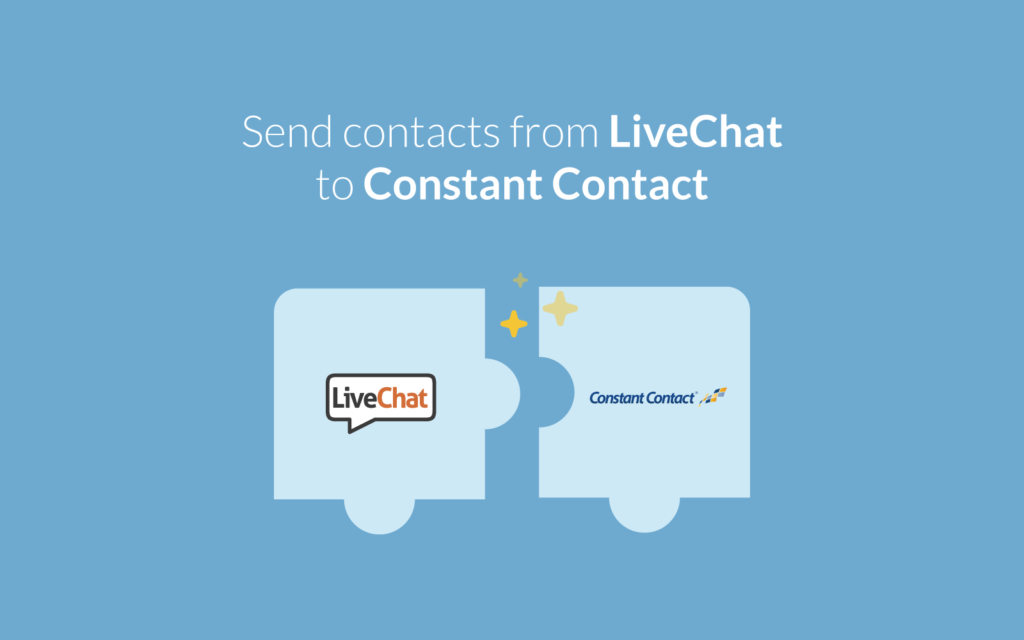
4. Email Support:
Users can submit queries or issues through Constant Contact’s email support system. This asynchronous support method allows for detailed explanations and documentation of the problem.
Community Assistance:
5. Constant Contact Community:
The Constant Contact Community is a valuable platform where users can seek help from peers, share insights, and discuss troubleshooting strategies. Engaging with the community often leads to collaborative problem-solving.
6. Webinars and Training:
Constant Contact regularly conducts webinars and training sessions. Users can attend these sessions to enhance their skills, troubleshoot issues, and gain insights into advanced features.
Proactive Troubleshooting Tips:
7. Check System Status:
Before troubleshooting, users can check Constant Contact’s system status page for any ongoing issues or maintenance. This transparency helps users determine if the problem is platform-wide.
8. Clear Browser Cache:
A common troubleshooting step is to clear the browser cache. Constant Contact users can find guidance on how to perform this action to resolve issues related to cached data.
User Feedback:
9. Customer Testimonials on Support:
Explore customer testimonials specifically related to support experiences. Positive feedback in this regard indicates the effectiveness of Constant Contact’s customer support.
10. Online Reviews on Support:
Review online platforms for feedback on Constant Contact’s support. Evaluate sentiments and experiences shared by users regarding the efficiency and responsiveness of customer support.
In conclusion, Constant Contact places a strong emphasis on troubleshooting and customer support, offering users multiple channels to resolve issues promptly. Utilizing the available resources and engaging with the support options ensures a smoother experience for users.
Constant Contact Updates and Future Developments
Staying informed about Constant Contact’s updates and future developments is crucial for maximizing the potential of this email marketing platform. In this guide, we’ll explore how Constant Contact keeps its users abreast of updates and what to expect in future developments.
Regular Software Updates:
1. Automated Notifications:
Constant Contact provides automated notifications within the platform to inform users of software updates. Users receive alerts about new features, improvements, and bug fixes directly in their dashboard.
2. Email Updates:
Subscribers to Constant Contact’s newsletters or updates receive regular emails detailing the latest enhancements and features. These emails serve as a comprehensive source of information on recent platform developments.
Blog and Announcement Section:
3. Dedicated Blog Posts:
Constant Contact maintains a dedicated blog section on its website, where in-depth articles are published about updates, feature releases, and best practices. Users can visit the blog to gain insights into the latest developments.
4. Announcement Section:
The platform often has a dedicated section for announcements within the user interface. This section serves as a centralized location for users to find detailed information about recent updates and upcoming features.
Feedback and User Input:
5. User Feedback Integration:
Constant Contact values user feedback and often integrates user suggestions into updates. The platform encourages users to share their thoughts, ensuring that future developments align with the needs of the user base.
6. Feature Request Forum:
The Feature Request Forum allows users to submit ideas for improvements and vote on suggestions from others. Constant Contact uses this forum to gauge user priorities and shape the direction of future developments.
Roadmap and Sneak Peeks:
7. Product Roadmap:
Constant Contact often shares a product roadmap, outlining upcoming features and enhancements. Users can refer to this roadmap to anticipate future developments and plan their strategies accordingly.
8. Sneak Peeks and Teasers:
Occasionally, Constant Contact provides sneak peeks or teasers of upcoming features through various channels. These previews generate excitement and anticipation among users for the platform’s future capabilities.
Webinars and Training:
9. Webinars on New Features:
Constant Contact conducts webinars and training sessions specifically focusing on new features and updates. Users can participate in these sessions to gain a deeper understanding of recent developments.
10. Training Materials for Updates:
Educational resources, including guides and tutorials, are often provided to accompany updates. These materials empower users to navigate and leverage new features effectively.
In conclusion, Constant Contact keeps users well-informed about updates and future developments through a variety of channels, ensuring a transparent and collaborative relationship with its user base.
Conclusion:
In the dynamic landscape of email marketing, staying informed and adaptive is key to success. Constant Contact excels in keeping its user base up-to-date through a multifaceted approach. From automated notifications and insightful blog posts to a vibrant community forum, the platform ensures that users are in the know about the latest features and improvements.
Constant Contact’s commitment to transparency extends to user input, where feedback and feature requests actively shape the platform’s trajectory. The Feature Request Forum stands as a testament to the collaborative spirit, allowing users to have a direct impact on the future developments of the platform.
The roadmap and sneak peeks offer a glimpse into the exciting journey ahead, providing users with anticipation for what’s on the horizon. Webinars and training sessions become valuable resources, guiding users through the intricacies of new features and updates, empowering them to make the most of Constant Contact’s capabilities.
As you navigate the evolving landscape of email marketing, remember that Constant Contact not only addresses the present needs of its users but also lays the groundwork for a future filled with innovation and growth. By leveraging the diverse array of communication channels and resources provided, you’re not just a user; you’re an active participant in the ongoing success story of Constant Contact.
Embrace the updates, explore the developments, and continue crafting impactful email campaigns with the knowledge that Constant Contact is committed to empowering your journey in the ever-expanding world of digital marketing.
Stay connected, stay informed, and keep achieving your email marketing goals with Constant Contact. Here’s to the future of your marketing endeavors, fueled by the continuous evolution and support from Constant Contact!
This Post Has One Comment
Comments are closed.

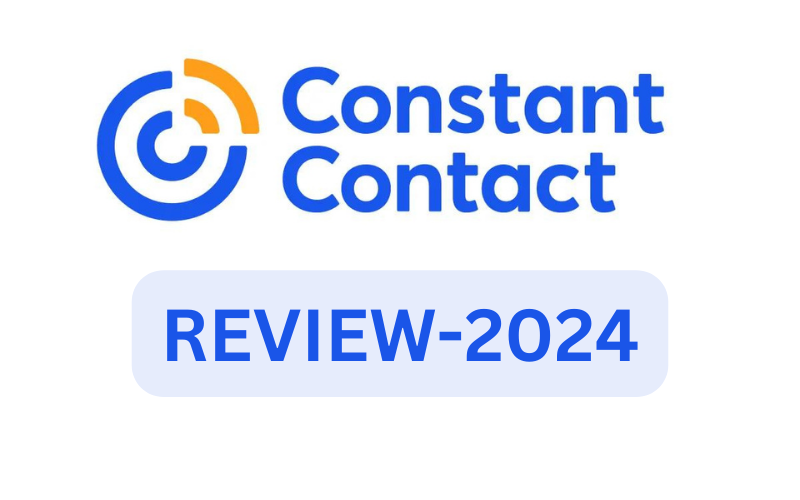
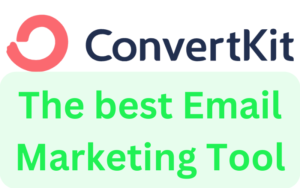


Pingback: HubSpot Hacks: Elevate Your Digital Marketing Game in 2024 - Digital Products Inquiry